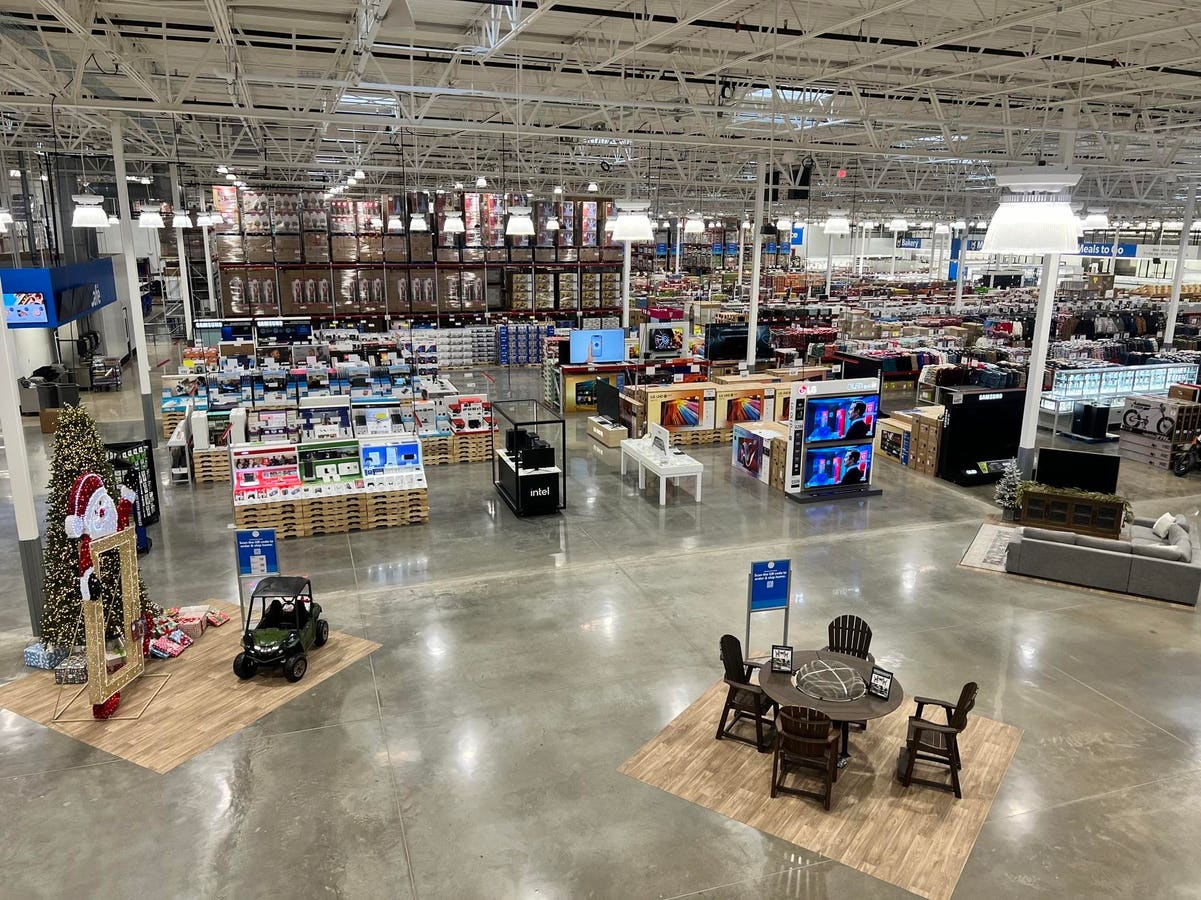Sam’s Club has long been one of the most innovative retailers in America. However, since its new CEO Chris Nicholas took over the helm last year, that moniker is now coming into question.
Because the phrase “one of” is a disservice.
Sam’s Club isn’t one of the most innovative retailers. It may now just be the single most innovative retailer out there.
Case in point: the new store it plans to open in Grapevine, Texas later this month.
According to a recent interview with Nicholas at Groceryshop (see above), Sam’s Club plans to open a new store that will have . . . wait for it . . . no checkout lanes.
There’s innovation. And then there’s innovation.
This is innovation.
It’s bold. It’s unprecedented. And it’s an idea that shows that Sam’s Club is unafraid to fail.
Checklanes? Where We’re Going, We Don’t Need Checklanes
According to Nicholas, the new store is part of Sam’s Club’s broader strategy to “pioneer the future of retail,” i.e. to create a store that is a physical manifestation of the company’s vision for a fully digital engagement across its operations, and here is how it works.
The new store replaces traditional checkout lanes with a digital-first shopping experience where customers use Sam’s Club’s popular Scan & Go smartphone app to make purchases as they shop (an app that remarkably 30% of Sam’s Club shoppers already use chainwide). When customers finish shopping they can then simply exit the store via computer vision-based archways (see photo below) that cross-check their carts against their digital receipts, thereby enabling them to avoid lines altogether.
Will the idea work?
Maybe. Maybe not. But that is not the point.
More Than Just A Store – It’s A Laboratory For Learning
The point is that the store is a testing ground to understand the puts and takes of omnichannel warehouse club retailing.
For example, Nicholas mentioned that the absence of traditional checkouts allows Sam’s Club to reimagine its floor space. The area typically occupied by cash registers instead will showcase online-only items, ranging from towering Christmas trees to dazzling lab-grown diamonds, all of which allows customers to interact with products they might otherwise only see on a screen.
The new store design also plans to allocate more space for the preparation of online orders. Store workers will have approximately four times the area to assemble orders for curbside pickup and home delivery, reflecting the company’s commitment to evolving with consumers’ increasing proclivities to shop via e-commerce.
But perhaps, most importantly, the store helps Nicholas and his team understand “friction,” a word Nicholas used over and over again in the interview. By walking out on the thin branch of innovation without a net, Sam’s Club will get a better understanding of what trade offs customers are willing make in exchange for a more convenient, time saving, and easy shopping experience.
If 30% of Sam’s Club shoppers already use Scan & Go regularly, is it a bridge too far to force everyone who visits one particular store to shop that way? Or does it risk alienating the 70% of shoppers who don’t use Scan & Go?
Sam’s Club will never know the answer to these questions unless it tries.
Rest Assured, This Isn’t Sam’s Club First Innovation Rodeo
It very well could be quite alarming to Grapevine shoppers as they enter the store for the first time, but, newsflash, Sam’s Club has already run this experiment, too. It knows the downside risk of this approach from its first concept store, Sam’s Club Now, that opened back in 2018 and that also required all shoppers to shop via its Scan & Go app.
And, yet, for some odd reason, the sky never fell with Sam’s Club Now, and instead Sam’s Club Now helped Sam’s Club learn how to perfect its Scan & Go app and how to deploy computer vision technology to improve the experience for both its employees and its shoppers. None of which would have likely happened had Sam’s Club not been willing to take a similar bold chance six years ago.
So put that in your pipe and smoke it Chicken Little.
As revolutionary as a checkout-free warehouse club experience may sound, what Sam’s Club plans to unveil later this month is, in reality, far more evolution than revolution, and that’s the beauty of it.
It’s Design Thinking At Its Finest
Nicholas and Sam’s Club are designing for the Sam’s Club experience not of tomorrow but for 10 or 15 years down the road. They are designing for a future in which shoppers are more tech savvy than they are today and one in which Gen Z and Millennials hold even more spending power.
Or said another way, it is concept store work at its finest.
Sam’s Club is taking the risk of opening a single store that could fail for the option value of learning about what disrupting itself could look like at a time when so many other retailers are busy burying their heads in the sand and are just happy doing things incrementally better with each passing day. Through successive concept stores — first Sam’s Club Now and then this new Grapevine store — Sam’s Club’s realization of its store of the future is much more in focus than it is at other retailers, and particularly compared to its biggest rival, Costco.
There’s clearly something in the water at Sam’s Club and the rest of the retail industry would be wise to say to itself, “I’ll have what Sam’s is having.”
Read the full article here





